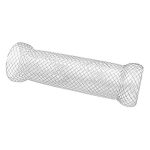The intercostal pain are particularly troublesome on a daily basis. They are usually located in the chest and are caused by inflammation of the intercostal nerve. They can have many causes, including intercostal muscle tear. This is the subject of this article.
Definition and anatomy
What is an intercostal tear?
There are many types of muscle damage, such as contracture, tear, rupture, elongation or disinsertion. These lesions are distinguished by their depth.
We are talking about intercostal tear when the fibers of the intercostal muscles rupture.
Like all intercostal pain, the pain associated with an intercostal tear is concentrated in the rib. It is sometimes associated with pulmonary or cardiac discomfort and its intensity increases with coughing, sneezing, movement of the spine or bad posture. Breathing also becomes painful.
Anatomical reminder on the ribs and intercostal muscles
The ribs are the basic structures of the thoracic cavity. There are 24 of them, but they are divided into 12 pairs. These are long, arc-shaped bones that articulate at the front at the sternum and at the back at the spine. Inside the rib cage are the lungs, heart, esophagus and trachea. It also contains an important nervous and vascular network (blood and lymphatic).
As the name suggests, intercostal muscles, they are a group of muscles that lies between the ribs. They start at the level of the sternum and lengthen towards the spine.
The intercostal muscles play an important role in respiration. In association with the diaphragm, they control the volume of the rib cage during inspiration and expiration.
La intercostal muscle tear can have several origins.
In most cases, it appears as a result of mechanical problems such as severe trauma, excessive sports training or a wrong movement. This is most often seen in athletes and the elderly.
Indeed, among athletes, direct blows received in some collision sports can cause the intercostal tear. This concerns rugby, football, ice hockey, boxing or lacrosse. For good reason, the intercostal muscles are thinner and more vulnerable to sudden shocks.
About the elderly, reflexes and flexibility of muscles and joints decrease with age. This is why they are more likely to suffer an intercostal tear while doing gardening or DIY.
In other cases, the affection arises from the shocks induced by violent sneezing and the efforts cough. The risks are thus high in the presence of pulmonary pathologies responsible for intense coughing spells. The latter promote the occurrence of a sudden intercostal muscle tear.
How to treat an intercostal tear?
La intercostal tear must be taken care of quickly. Indeed, it heals more easily when treated as soon as the first symptoms appear.
At the moment, the treatment is based on the immediate stop of any sporting activity and on rest. This helps avoid movements that can trigger the pain again.
Le RICE-protocol is also essential to treat an intercostal tear. It is based on four principles which are placing ice on the affected muscle, compression, elevation and immobilization.
It is especially important to avoid massaging or applying heat to the tear and the painful area. These actions may aggravate the injury and cause the muscle fibers to bleed.
To relieve the painful sensation, the doctor may prescribe analgesics and anti-inflammatories. These drugs can also facilitate healing.
In some cases, the physiotherapy (physiotherapy) and osteopathy can also be useful for treat intercostal tear. These therapies use techniques that will act at the level of the dorsal joints to promote rapid healing.
And very rarely, acupuncture and acupressure are prescribed. These alternative therapies aim to reduce muscle stiffness and reduce pain. However, they are not supported by solid scientific evidence, although many patients see significant benefits in them.
During the treatment of the intercostal tear, it is necessary to stop smoking. This can accentuate the coughing spells, which are detrimental to the complete remission of the tear.
What about natural remedies?
Although they are not supported by solid scientific evidence, several natural products and home remedies are used to treat pain related to intercostal tearing, especially for their anti-inflammatory power. It is essential to consult a doctor beforehand, mainly to avoid drug interactions and side effects.
Here is a non-exhaustive list of plants and essential oils that are effective in controlling pain and inflammation. The products are available on the site Country. Use promo code LOMBAFIT15 if you wish to obtain one of the following products, or any remedy aimed at relieving your symptoms and improving your quality of life:
- Turmeric. Thanks to its antioxidant and anti-inflammatory powers very powerful, turmeric is one of the most used plants in a culinary and therapeutic context. The composition of turmeric is essentially made of essential oils, vitamins (B1, B2, B6, C, E, K) and trace elements. But it is to its composition rich in curcumin and curcuminoids that we owe them and calm skin of this spice.
- Ginger. In addition to the special flavor it brings to the kitchen and its aphrodisiac properties, ginger is a root well known for its anti-inflammatory powers. the gingerol gives it its anti-inflammatory action. It is an active component acting on the inflammatory pain related to chronic joint inflammatory diseases, including rheumatoid arthritis, lupus, rheumatic diseases, etc. It has been proven that this active element is also effective in acting on the inflammation linked to arthritis and sciatica. Ginger also has other benefits thanks to its high potassium content and its richness in trace elements (calcium, magnesium, phosphorus, sodium) and vitamins (provitamin and vitamin B9).
- Omega-3s. Omega-3s are polyunsaturated fatty acids that play a very important role in the functioning of our body. They are provided by food in three natural forms: docosahexaenoic acid (DHA), alpha linolenic acid (ALA) and eicosapentaenoic acid (EPA). Beyond their action on the brain and the cardiovascular system, omega-3s prove very effective against inflammation. Indeed, they have the ability to act on the inflammatory mechanisms in osteoarthritis by slowing down cartilage destruction, thus they reduce the intensity of osteoarthritis pain. Sciatica, being most often linked to an inflammation secondary to a herniated disc, it can also respond to omega-3 provided it is consumed regularly.
- Lemon eucalyptus. Eucalyptus is a plant most often used in the form of herbal tea or essential oil. She would have anti-inflammatory effects which give it the ability to act on the bone and joint pain in general and the pain of sciatica in particular.
- wintergreen. Wintergreen is a shrub from which a very interesting essential oil is extracted. It is one of the most used essential oils in aromatherapy. This oil extracted from the shrub bearing the same name, is used in massage to relieve sciatica and act like a analgesic. Indeed, it provides a heating effect thanks to its ability toactivate blood circulation locally.
Remember that these products do not replace medical treatment. Do not hesitate to consult for support adapted to your condition.
How long does an intercostal tear last?
Le intercostal tear healing time greatly depends on rest and the treatment techniques used.
Depending on the muscle lesion, the resting of the muscles can range from 3 to 6 weeks.
To shorten the duration of intercostal pain, the physiotherapist can make a strapping to rest the ruptured intercostal muscle. In addition to relieving pain, this technique will help improve healing.
Although anyone can perform a strapping, it is however recommended to have the first bandage placed by a physiotherapist (physiotherapist) or a sports doctor. You should know that for each joint and each pathology the pose is different. A badly carried out strapping risks being counter-productive.
Intercostal tear and sick leave
A intercostal muscle tear can justify a work stoppage. The treatment of this muscle lesion is essentially based on rest. The latter can range from 1 month to 1 month and a half, depending on the speed of healing of the injured muscle.
An ultrasound can validate the diagnosis of an intercostal tear. Then, you must justify this information by submitting sheet number 3 of the medical certificate drawn up by your attending physician. The slip must mention the dates and the reasons for the work stoppage.
Resources
Projects
https://douleurs-musculaires.ooreka.fr/comprendre/dechirure-inter-costale








